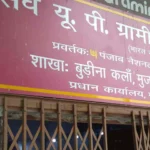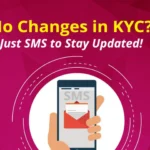Introduction: Is Free Really Free?
Imagine you’re at a street food stall, paying for a delicious plate of pani puri with a quick UPI scan. No cash, no hassle. Feels like magic, right? But here’s the question—if UPI transactions are free, how are banks, payment apps, and the system itself sustaining operations?
Spoiler alert: UPI might not be as “free” as you think.
Let’s break down the hidden costs you never realized you were paying.

1. Bank Charges on Certain Transactions
While most UPI payments between individuals are free, some banks have started imposing charges on business-related transactions. If you’re using UPI for high-value transfers or merchant payments, check your bank’s fee structure—you might be paying without even knowing it!
Real Example: Some private banks in India charge transaction fees on UPI payments above a certain limit. While ₹5–₹20 per transaction may not seem like much, frequent users could end up paying a hefty amount annually.
2. Merchant Fees (Passed on to You!)
Did you know that merchants accepting UPI payments often incur a fee? While UPI transactions are free for most small businesses, larger merchants may be charged an MDR (Merchant Discount Rate). Many businesses compensate for this by slightly increasing their prices.
Ever wondered why some shopkeepers insist on cash payments? Now you know!
3. Data Privacy: The Hidden Cost of Free Transactions
They say, “If something is free, you are the product.” Payment apps collect an enormous amount of user data—your spending habits, preferred brands, even the frequency of your transactions. This data is often used for targeted ads and marketing strategies, influencing how and where you spend your money.
4. Auto-Pay & Subscription Traps
Many UPI apps promote auto-pay options for OTT platforms, utility bills, and online subscriptions. While convenient, auto-debit features can sometimes continue charging you for services you no longer use.
Tip: Regularly check and cancel unwanted auto-pay transactions before they eat into your savings.
5. Digital Fraud & Scam Costs
UPI fraud cases have skyrocketed, and victims often face financial losses with little or no recourse. Fraudsters use fake UPI handles, phishing links, and even QR code scams to trick unsuspecting users.
Quick Prevention Tips:
- Never share your UPI PIN with anyone.
- Always verify the receiver’s details before transferring money.
- Avoid clicking on random payment links or QR codes from unknown sources.
Conclusion: Convenience Comes at a Price
UPI has revolutionized digital payments in India, offering unparalleled convenience. However, as we embrace this cashless ecosystem, we must stay aware of the hidden costs lurking beneath the surface.
So, the next time you hear “UPI is free,” remember—free doesn’t always mean zero cost.










